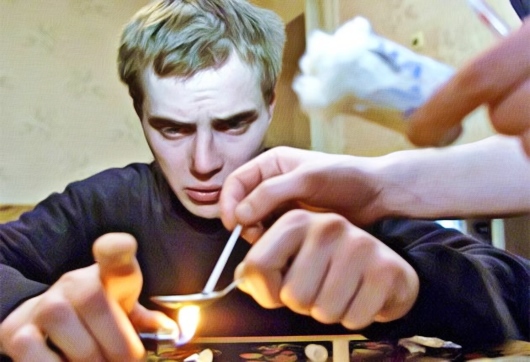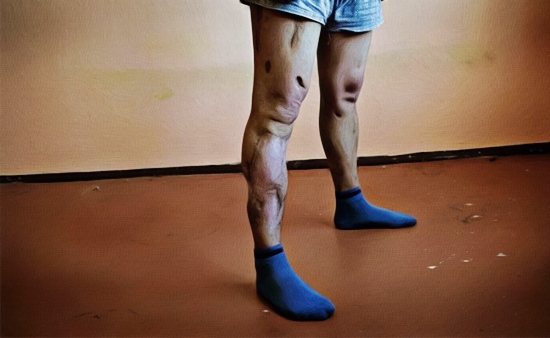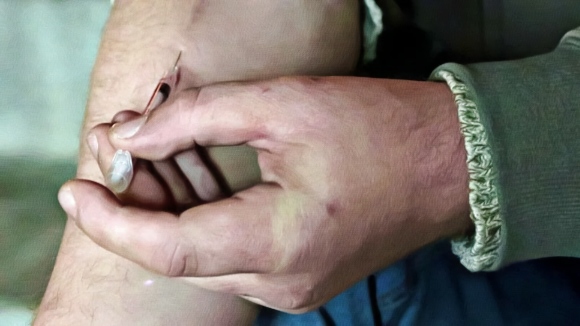What is the krokodil drug?
Krokodil is the street name for an opioid drug called desomorphine. It is a cheap heroin alternative that’s an opioid derivative of codeine, similar to morphine. Krokodil also frequently contains other toxic substances like paint thinner and gasoline.
It sometimes goes by other names such as Alligator Drug, Krok, Russian Magic, Poor Man’s Heroin and Zombie Drug.
The drug was first reported in Russia around 2003 after heroin became hard to get a hold of and prices surged. Krokodil became popular because it was easy to make from stuff found in hardware stores and pharmacies, not to mention it was also much cheaper than heroin.

“In Europe, for example, a dose costs just a few dollars, compared with about $20 for a hit of heroin,” wrote journalist Simon Shuster in Time Magazine.
What are the effects of krokodil?
Like heroin and other opioids, it has calming and pain-relieving effects, as well as gives users a euphoric high. According to reports, krokodil is 10 times more potent than morphine and is three times more toxic. It’s also highly addictive.
According to one Russian drug treatment center doctor, krokodil causes the strongest level of addiction and the addiction is the hardest substance addiction to cure.
People who inject krokodil also have a great variety of serious signs and symptoms.
For example, users have been known to develop extreme skin sores, infections and gangrene. These wounds often take on a discolored (green, grey, black) scale-like appearance that resembles the skin of a crocodile. It is believed this is why the drug got the street name “krokodil”.

How common is krokodil use?
Russia and Ukraine had the highest number of users. In 2011, it was estimated that approximately 100,000 people were using krokodil in Russia, and around 20,000 were using it in Ukraine. And according to media reports, approximately 65 million doses of krokodil were seized in 2011 in Russia.
Although in 2012, in response to the rise in Krokodil use, the Russian government implemented stricter controls on codeine, which is frequently used to make the drug. Codeine had previously been available without a prescription, but the ban on over-the-counter codeine sales brought the number of users down sharply.
Over the last eight years there have also been reports of krokodil drug use in Western Europe, Australia, Canada and the United States. However, it still remains relatively rare. According to the Drug Enforcement Administration, there has been no confirmed desomorphine found in any clinical specimen or drug sample in the United States since 2004.
What is krokodil made of?
The main ingredient in the krokodil drug is desomorphine, which is synthesized from codeine.
However, due to the homemade nature of the drug and the chemical process it needs to go through to get codeine to become desomorphine, krokodil contains other ingredients and additives.
In Russia, krokodil is commonly made of Caffetin, a headache pill which contains codeine, formic acid and gasoline. Users have also been known to add Tropikamid, a type of eye drop solution, to enhance the effects of the drug.
The substances are cooked together, similarly to how methamphetamine (“meth”) is cooked, to make krokodil.
The home-made heroin substitute can also contain a variety of other ingredients that are cheap and readily available. Other ingredients that have been found in krokodil are hydrocholric acid, paint thinner, iodine, gasoline, lighter fluid, red phosphorus (matchbook striking surfaces) battery acid, among others.
How is krokodil used?
Krokodil is typically taken using a needle and syringe to inject the liquid into a vein or under the skin.
According to reports, it only takes two to three minutes for the drug to start having an effect.

After onset, the euphoric effect is short-lived, usually lasting less than two hours.
Due to the short duration of the high many users will repeatedly and frequently administer the drug to avoid withdrawal symptoms.
Sources:
https://time.com/3398086/the-worlds-deadliest-drug-inside-a-krokodil-cookhouse/
https://www.bhpalmbeach.com/blog/authorities-wary-designer-drug-krokodil-appears-american-streets/
https://www.drugs.com/illicit/krokodil.html
https://www.deadiversion.usdoj.gov/drug_chem_info/desomorphine.pdf
https://www.healthline.com/health/krokodil-desomorphine#krokodil-ingredients
https://www.ncbi.nlm.nih.gov/pmc/articles/PMC4864092/
https://pubmed.ncbi.nlm.nih.gov/25710781/
https://jamanetwork.com/journals/jamadermatology/article-abstract/2089838
https://pubmed.ncbi.nlm.nih.gov/23726898/
https://pharmacy.hsc.wvu.edu/media/1315/krokodil-a-new-drug-of-abuse.pdf
https://www.youtube.com/watch?v=-xF1ejbShZ8
https://jamanetwork.com/journals/jamadermatology/fullarticle/2089838#
https://theconversation.com/krokodil-how-flesh-eating-zombie-drug-is-causing-a-global-crisis-106371
https://theconversation.com/the-rise-and-fall-of-russias-flesh-eating-drug-krokodil-31736
https://www.sciencedirect.com/science/article/abs/pii/S1010518214001619?via%3Dihub
https://www.ncjrs.gov/pdffiles1/nij/grants/254755.pdf
https://www.independent.co.uk/news/world/europe/krokodil-the-drug-that-eats-junkies-2300787.html?fbclid=IwAR2Ysw5rZGyeFmiMsK5Z78TYtB1SPyXIRSrBu3pqRSJDTQ9r0dPnZOEkJsU
https://www.cnn.com/2013/10/16/health/krokodil-zombie-drug/index.html
https://www.deadiversion.usdoj.gov/drug_chem_info/desomorphine.pdf

